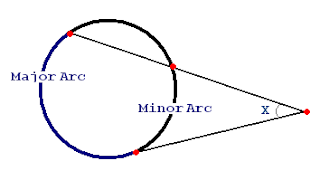Introduction for Median of numbers:
Median is the center value of the given numbers or allocation in their ascending order. Median is the average value of the two center elements when the size of the allocation is even. Half the numbers in the list are fewer, and half the numbers are greater. To locate the Median, place the numbers you are given in value order and find the center number. But there are two center numbers (as happens when there is an even amount of numbers) then average those two numbers.
Understanding Composite Number List is always challenging for me but thanks to all math help websites to help me out.
Median of Numbers:
Odd number:
Example:
Find the Median of {8, 2 and 7}.
Put them in order: {2, 7, and 8},
The center number is 7,
So the median is 7.
Even numbers:
Example:
Find the Median of {8, 2, 7 and 3}.
Put them in order: {2, 3, 7, and 8},
The center numbers are 3 and 7;
The average of 3 and 4 is 3.5,
So the median is 3.5.
Stuck on any of these topics solve math problems step by step, prime number 1-100 try out some best math website like mathsisfun, mathcaptain.com and math dot com.
Examples for Median of Numbers:
Example 1:
To find the median of numbers 5, 8, 7, 3, 4?
Solution:
Step 1:
Count the total numbers given.
There are 5 elements or numbers in the allocation.
Step 2:
Arrange the numbers in ascending order.
3, 4, 5, 7, 8
Step 3:
The total element in the allocation (5) is odd.
The middle position can be calculated using the formula. (n + 1) / 2.
So the middle position is (5 + 1) / 2 = 6 / 2 = 3.
The number at 3rd position is = Median = 5.
Example 2:
To find the median of numbers 6, 4, 7, 2, 1, 8?
Solution:
Step 1:
Count the total numbers given.
There are 6 elements or numbers in the allocation.
Step 2:
Arrange the numbers in ascending order.
1, 2, 4, 6, 7, 8
Step 3:
The total element in the allocation (6) is even.
As the whole is even, we have to take average of number at n / 2 and (n / 2) + 1
So the position are n / 2 = 6 / 2 = 3 and 4
The number at 3rd and 4th position are 4, 6
Step 4:
Find the median.
The average is (4 + 6) / 2 = Median = 5
Median is the center value of the given numbers or allocation in their ascending order. Median is the average value of the two center elements when the size of the allocation is even. Half the numbers in the list are fewer, and half the numbers are greater. To locate the Median, place the numbers you are given in value order and find the center number. But there are two center numbers (as happens when there is an even amount of numbers) then average those two numbers.
Understanding Composite Number List is always challenging for me but thanks to all math help websites to help me out.
Median of Numbers:
Odd number:
Example:
Find the Median of {8, 2 and 7}.
Put them in order: {2, 7, and 8},
The center number is 7,
So the median is 7.
Even numbers:
Example:
Find the Median of {8, 2, 7 and 3}.
Put them in order: {2, 3, 7, and 8},
The center numbers are 3 and 7;
The average of 3 and 4 is 3.5,
So the median is 3.5.
Stuck on any of these topics solve math problems step by step, prime number 1-100 try out some best math website like mathsisfun, mathcaptain.com and math dot com.
Examples for Median of Numbers:
Example 1:
To find the median of numbers 5, 8, 7, 3, 4?
Solution:
Step 1:
Count the total numbers given.
There are 5 elements or numbers in the allocation.
Step 2:
Arrange the numbers in ascending order.
3, 4, 5, 7, 8
Step 3:
The total element in the allocation (5) is odd.
The middle position can be calculated using the formula. (n + 1) / 2.
So the middle position is (5 + 1) / 2 = 6 / 2 = 3.
The number at 3rd position is = Median = 5.
Example 2:
To find the median of numbers 6, 4, 7, 2, 1, 8?
Solution:
Step 1:
Count the total numbers given.
There are 6 elements or numbers in the allocation.
Step 2:
Arrange the numbers in ascending order.
1, 2, 4, 6, 7, 8
Step 3:
The total element in the allocation (6) is even.
As the whole is even, we have to take average of number at n / 2 and (n / 2) + 1
So the position are n / 2 = 6 / 2 = 3 and 4
The number at 3rd and 4th position are 4, 6
Step 4:
Find the median.
The average is (4 + 6) / 2 = Median = 5





